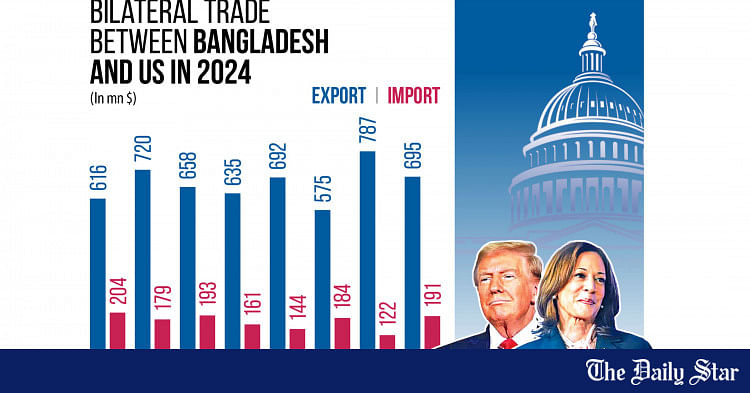- Jan 24, 2024
- 2,854
- 1,420
- Copy to clipboard
- Thread starter
- Moderator
- #25
Only 10% of planned economic zones get off the ground in a decade
BEZA now plans to set up 100 industrial enclaves by 2041 instead of initial deadline of 2030
Only 10 economic zones (EZs) have become operational since the Bangladesh Economic Zones Authority (BEZA) rolled out its massive industrialization plan in 2015, raising questions about whether its goal of setting up 100 enclaves will be materialized on time.

The board of the BEZA has approved a total of 97 EZs over the past decade. Of them, 68 zones will be set up by the government and 29 by the private sector, with the initial deadline set at 2030.
Of the 10 economic zones, two are government-run -- Bangabandhu Sheikh Mujib Shilpa Nagar (BSMSN) in Chattogram, the Sreehatta Economic Zone in Sylhet -- and eight are private.
The private EZs are City Economic Zone, Meghna Industrial Economic Zone, Meghna Economic Zone, Hoshendi Economic Zone, Abdul Monem Economic Zone, Bay Economic Zone, Aman Economic Zone, and East West Economic Zone..
He said the Beza has revised its target to set up 100 EZs by 2041 from 2030 initially since implementing an economic zone project takes time.
"We will be able to make at least 38 EZs operational by 2030."
Syed Akhtar Mahmood, a former lead private sector specialist at the World Bank Group, praised the idea of EZs as effective since there is land scarcity in Bangladesh and the country is looking for well-planned industrialization.
He suggested providing land only to investors who have good intentions of setting up factories. "Otherwise, genuine investors will not get the land when they need it."
Mahmood said the BEZA should implement EZs in phases instead of going after all of them simultaneously.
"This is because if all EZs are implemented concurrently, none of them will be executed properly since there is an involvement of a huge amount of funds."
"There will not be much delay if the BEZA puts the experience to good use when implementing the projects."
BEZA has received $28.75 billion worth of investment proposals from companies at home and abroad. The actual investment stood at $6.05 billion between 2020 and June 30 last year.
According to a report of the agency, the operating zones have employed around 60,000 people. Some 7,000 are working in government-owned zones and 53,000 in private zones.
Products worth $14.47 billion were produced in 10 EZs in the last fiscal year of 2022-23, it said.
BEZA now plans to set up 100 industrial enclaves by 2041 instead of initial deadline of 2030
Only 10 economic zones (EZs) have become operational since the Bangladesh Economic Zones Authority (BEZA) rolled out its massive industrialization plan in 2015, raising questions about whether its goal of setting up 100 enclaves will be materialized on time.
The board of the BEZA has approved a total of 97 EZs over the past decade. Of them, 68 zones will be set up by the government and 29 by the private sector, with the initial deadline set at 2030.
Of the 10 economic zones, two are government-run -- Bangabandhu Sheikh Mujib Shilpa Nagar (BSMSN) in Chattogram, the Sreehatta Economic Zone in Sylhet -- and eight are private.
The private EZs are City Economic Zone, Meghna Industrial Economic Zone, Meghna Economic Zone, Hoshendi Economic Zone, Abdul Monem Economic Zone, Bay Economic Zone, Aman Economic Zone, and East West Economic Zone..
He said the Beza has revised its target to set up 100 EZs by 2041 from 2030 initially since implementing an economic zone project takes time.
"We will be able to make at least 38 EZs operational by 2030."
Syed Akhtar Mahmood, a former lead private sector specialist at the World Bank Group, praised the idea of EZs as effective since there is land scarcity in Bangladesh and the country is looking for well-planned industrialization.
He suggested providing land only to investors who have good intentions of setting up factories. "Otherwise, genuine investors will not get the land when they need it."
Mahmood said the BEZA should implement EZs in phases instead of going after all of them simultaneously.
"This is because if all EZs are implemented concurrently, none of them will be executed properly since there is an involvement of a huge amount of funds."
"There will not be much delay if the BEZA puts the experience to good use when implementing the projects."
BEZA has received $28.75 billion worth of investment proposals from companies at home and abroad. The actual investment stood at $6.05 billion between 2020 and June 30 last year.
According to a report of the agency, the operating zones have employed around 60,000 people. Some 7,000 are working in government-owned zones and 53,000 in private zones.
Products worth $14.47 billion were produced in 10 EZs in the last fiscal year of 2022-23, it said.














